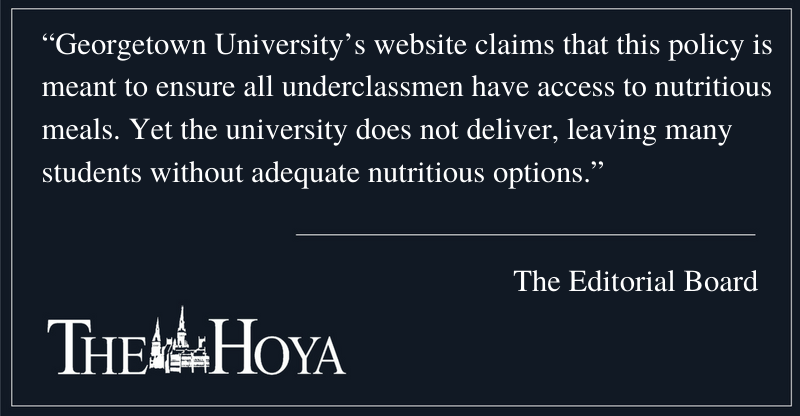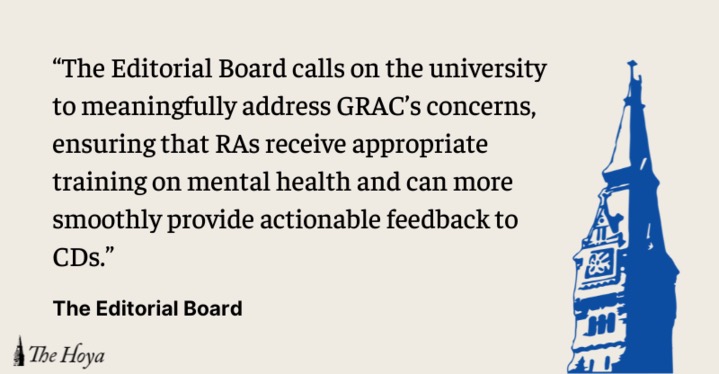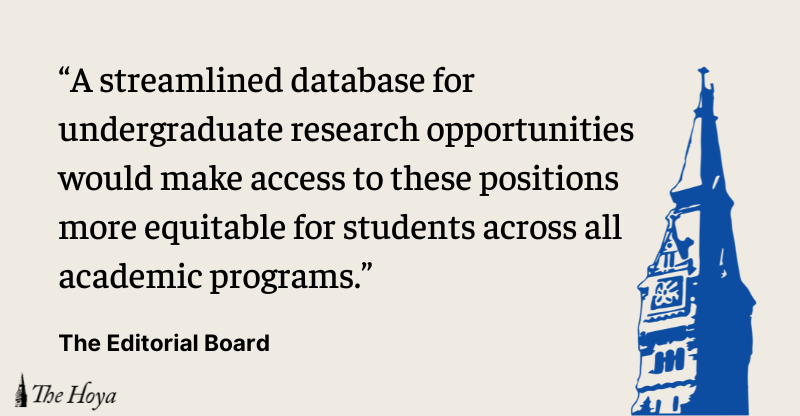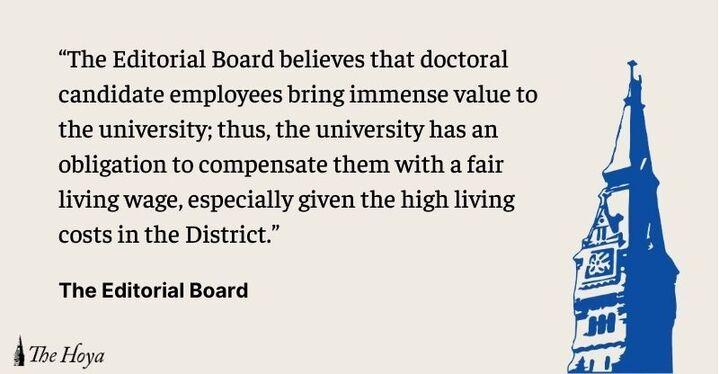Georgetown University students should be able to find nutritious food on campus, but they cannot always access fresh vegetables with their meal plans.
With some dietary and religious exceptions, all freshmen and sophomores living on campus without in-unit kitchens are required to purchase a meal plan. Georgetown’s website claims that this policy is meant to ensure all underclassmen have access to nutritious meals. Yet the university does not deliver, leaving many students without adequate nutritious options.
If Georgetown is going to require most underclassmen to have meal plans, the university must provide a greater variety of fresh vegetables at all hours that dining services are open.
Less than 10% of college students nationwide consume the recommended amount of fruits and vegetables each day, per a study by the journal Preventive Medicine. To combat the lack of nutrition among students, universities should provide at least five fresh fruit options and five fresh vegetable options at all campus dining locations serving lunch and dinner, according to guidelines from Partnership for Healthier America’s Healthier Campus Initiative quoted in Forbes.
Though students can access fresh fruit in the bottom floor of Leo J. O’Donovan Dining Hall and through meal exchanges at several other locations like Whisk and Royal Jacket, vegetable options on the meal plan are inadequate. The menu at downstairs Leo’s always includes some vegetable options, but these are not always sufficient. During the 4 p.m to 8 p.m. dinner hours on Jan. 23, the downstairs Leo’s menu included five cooked vegetable options in addition to its salad bar: roasted seasoned cauliflower, green cabbage, shredded carrots, “peas and carrots,” and “seasoned vegetable medley.”
But even when downstairs Leo’s has five vegetable options, students find that they lack freshness and nutritional value, according to Reagan Leibovitz (COL ’22).
“One concept I struggled with my first couple of months at Georgetown was seeing that there were hypothetically ‘healthy’ options such as a variety of vegetables, yet feeling disgusting after eating them. It took me a while to realize that it was because they were so soaked with oil,” Leibovitz said in an interview with The Hoya.
Moreover, students need access to healthy options at all hours. Though the university resumed its Late Night Leo’s program in fall 2018 with meal swipe options from 8 p.m. to 10 p.m, this menu primarily features a variety of fast food options. For the entire week of Jan. 23, late night menus listed no cooked vegetables, but students just getting out of class or club meetings at 8 p.m. deserve the same nutritional options as those who eat earlier. Late Night Leo’s should serve the same variety of vegetables that Leo’s serves at dinner each night before 8 p.m.
The lack of sufficient vegetable options is unacceptable when most freshmen are required to pay a minimum of $3,007 and sophomores $2,500 for meal plans each semester. If students have to purchase costly meal plans and rely on these to cover most meals, then healthy options need to be available.
Students at Georgetown have also expressed interest in healthier options. The Late Night Leo’s menu was altered in response to requests for expanded vegetarian options and now includes a vegetable hummus wrap, vegetable quesadilla, side salad and fruit cup, according to Hoya Hospitality and Aramark’s registered dietician Tiffany Leon in an email to The Hoya.
Late Night Leo’s is also welcoming feedback for further changes to its menu and offers an option for students to submit their own recipes for consideration by Hoya Hospitality, according to Leon. The university has responded to past requests for menu changes, so students should take advantage of the available channels to ask the university for healthier options at all hours.
Georgetown should invest in providing fresh vegetable options at all open dining locations. Student health depends on it.
The Hoya’s editorial board is composed of six students and chaired by the opinion editor. Editorials reflect only the beliefs of a majority of the board and are not representative of The Hoya or any individual member of the board.














